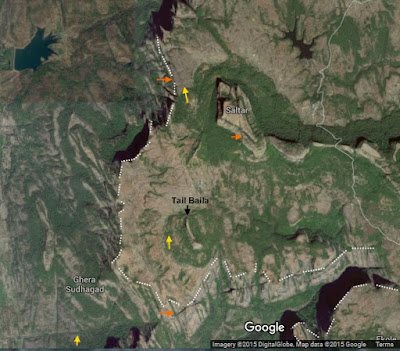.. and I don't mean just culturally, but biologically as well.
Carl Zimmer in the New York Times summarizes recent results from a wide ranging study which incorporates the genetics of extant as well as ancient Europeans. The study found evidence for several instance of natural selection altering height, digestion, skin color and our immune system.
from the article:
Previous studies had suggested that Europeans became better able to digest milk once they began raising cattle. Dr. Reich and his colleagues confirmed that LCT, a gene that aids milk digestion, did experience intense natural selection, rapidly becoming more common in ancient Europeans. But it didn’t happen when farming began in Europe, as had been supposed. The earliest sign of this change, it turns out, dates back only 4,000 years.
While agriculture brought benefits like a new supply of protein in milk, it also created risks. Early European farmers who depended mainly on wheat and other crops risked getting low doses of important nutrients.
So a gene called SLC22A4 proved advantageous as soon as Europeans started to farm, Dr. Reich and his colleagues found. It encodes a protein on the surface of cells that draws in an amino acid called ergothioneine. Wheat and other crops have low levels of ergothioneine, and the new variant increases its absorption. That would have increased the chances of survival among the farmers who had the gene.
People who are followers of the going back to a hunter gatherer Paleolithic diet fad, take note. Our digestive arsenal and our micro-biomes have responded to a different agricultural food combination. Human evolution did not freeze with the coming of the ice age. Agriculture and animal domestication have pushed evolution into changing our DNA.
For a more detailed treatment on human evolution over the Holocene, I recommend strongly Gregory Cochran and Henry Harpending's book - The 10,000 Year Explosion: How Civilization Accelerated Human Evolution.
Carl Zimmer in the New York Times summarizes recent results from a wide ranging study which incorporates the genetics of extant as well as ancient Europeans. The study found evidence for several instance of natural selection altering height, digestion, skin color and our immune system.
from the article:
Previous studies had suggested that Europeans became better able to digest milk once they began raising cattle. Dr. Reich and his colleagues confirmed that LCT, a gene that aids milk digestion, did experience intense natural selection, rapidly becoming more common in ancient Europeans. But it didn’t happen when farming began in Europe, as had been supposed. The earliest sign of this change, it turns out, dates back only 4,000 years.
While agriculture brought benefits like a new supply of protein in milk, it also created risks. Early European farmers who depended mainly on wheat and other crops risked getting low doses of important nutrients.
So a gene called SLC22A4 proved advantageous as soon as Europeans started to farm, Dr. Reich and his colleagues found. It encodes a protein on the surface of cells that draws in an amino acid called ergothioneine. Wheat and other crops have low levels of ergothioneine, and the new variant increases its absorption. That would have increased the chances of survival among the farmers who had the gene.
People who are followers of the going back to a hunter gatherer Paleolithic diet fad, take note. Our digestive arsenal and our micro-biomes have responded to a different agricultural food combination. Human evolution did not freeze with the coming of the ice age. Agriculture and animal domestication have pushed evolution into changing our DNA.
For a more detailed treatment on human evolution over the Holocene, I recommend strongly Gregory Cochran and Henry Harpending's book - The 10,000 Year Explosion: How Civilization Accelerated Human Evolution.




